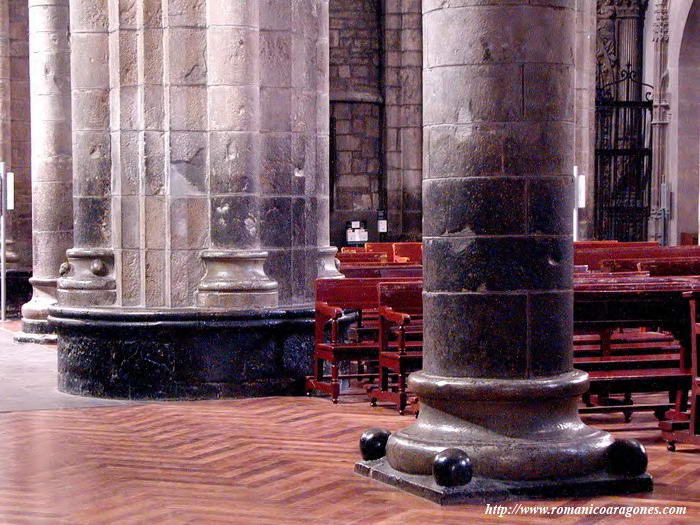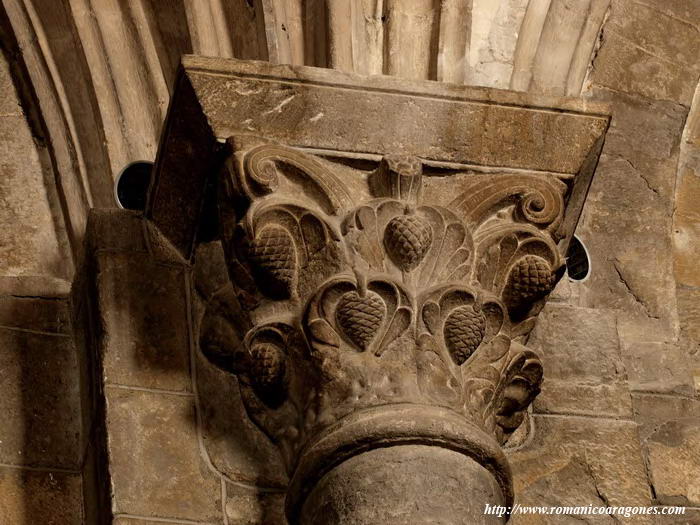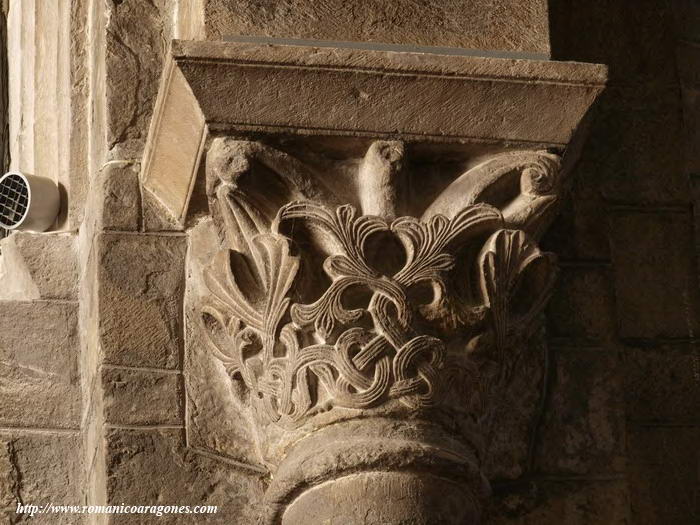1
Accustomed to being dazzled by the grandeur
of this and other temples, our eye is naturally drawn to look upwards at
the vaulted ceilings which can result in elements lower down, as beautiful
and well-made as those in Jaca Cathedral, going unnoticed. Photo 1 shows
the bases of the cylindrical and cruciform pilasters which form part of
the separation between the north aisle and the nave.
Photos 2 and 4 show details
of the same. Particularly conspicuous are the large ball decorations on
the huge attic base which this cylindrical pillar rests on.
The bases of the engaged columns stand on
a large cylindrical podium, which is adorned with a double torus moulding
at the top.
One of the ball ornaments which decorate
the base seen in photo 4 has been transformed into a little lions head.
Photos 5 and 6 show two
decorated capitals; one is decorated with perfectly crafted interlacing
and the other with pine cones on plant motifs. This last one is identical
to a capital in the secret chamber in Santa María de la Serós.
5
6
In the craftsmanship of
the capital depicted in photo 7 the work of the Master of Jaca can clearly
be identified. The so-called pitones or horn decorations of the angles have
been substituted for little lions’ heads. Each of the figures on either
side of the front face of the capital has two lions on a leash; the tails
of the lions are entwined and almost knotted and are lying on the base of
the capital. In the background there are three figures of youths dressed
in chlamys (short cloaks worn by men in ancient Greece); the central figure
has a snake in his hand and appears to have a nimbus circling his head.